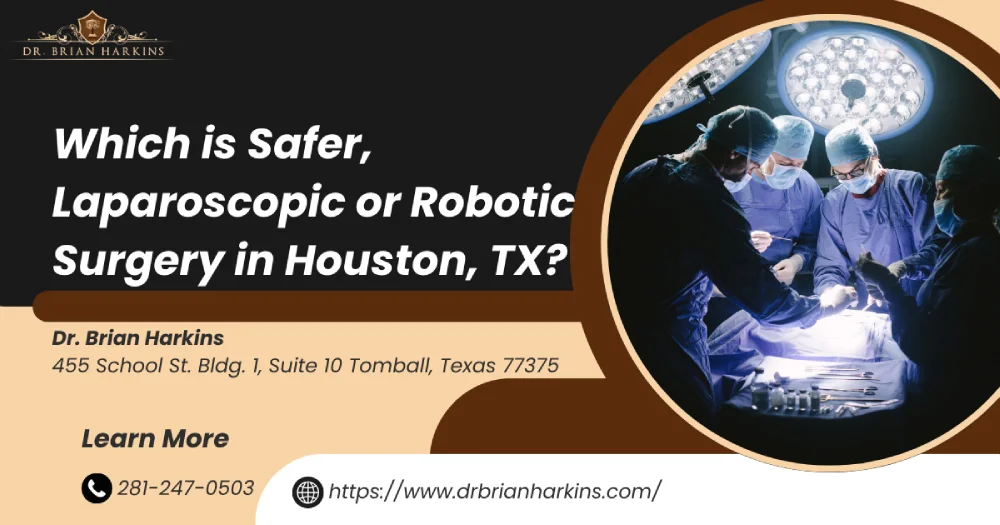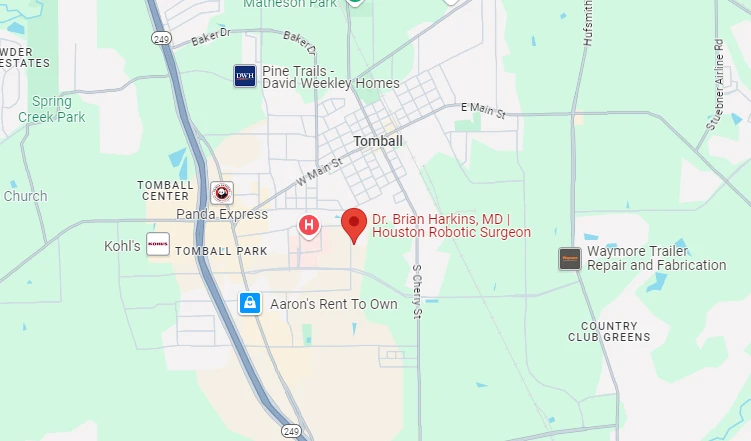
Choosing between laparoscopic and robotic surgery in Houston, TX can be daunting. Many patients ask: Which is safer, laparoscopic or robotic surgery in Houston, TX? In general, both laparoscopic and robotic-assisted surgeries are considered safe and minimally invasive, with comparable clinical outcomes for many operations. That said, safety isn’t one-size-fits-all. Your personal health, the specific operation, and—most importantly—the skill of your Houston surgeon all shape risk. Below, you’ll find a practical, evidence-based comparison so you can walk into your consultation with confidence and the right questions in hand.
Houston is home to the world-renowned Texas Medical Center, giving you access to virtually every modern surgical tool. Before comparing safety stats, you need a clear picture of what each method actually involves and why surgeons may favor one over the other.
Laparoscopy uses several small quarter-inch incisions. Long instruments and a tiny camera are inserted, and the surgeon controls everything directly by hand while watching a 2-D screen. This laparoscopic approach has been the gold standard for over 30 years and is widely available across Houston community hospitals and academic centers alike.
Robotic-assisted surgery—most commonly performed with the da Vinci® Xi—also relies on small incisions, but the instruments are wristed and controlled from a console. You might picture a robot operating independently; in reality, your surgeon is still in total control, but gains greater range of motion and 3-D high-definition vision.
| Feature | Laparoscopic | Robotic-Assisted |
|---|---|---|
| Camera view | 2-D HD | 3-D HD with depth perception |
| Instrument range | Rigid; limited angles | Wristed; 7 degrees of motion |
| Typical learning curve | 20–30 cases | 40–70 cases |
| Average Houston facility fee* | $1,200 | $3,500 |
| Conversion-to-open goal | ≤3% | ≤3% |
*Approximate 2024 rates; confirm with your hospital.
Safety statistics can feel abstract, so let’s translate the numbers into plain English. Over multiple meta-analyses spanning gallbladder, hernia, colorectal, and urologic surgeries, complication rates hover around 3–5% for both techniques when performed by seasoned surgeons.
A 2023 review from Baylor College of Medicine compared 9,742 Houston-area cholecystectomies:
Statistically, those differences are negligible.
Conversion adds operating time and recovery pain. High-volume Houston practices report:
A slight edge for robotics, mainly in obese or adhesive abdomens.
Centers performing ≥200 minimally invasive cases yearly show lower infection and readmission rates. Ask:
High BMI, past surgeries, and uncontrolled diabetes raise risks regardless of technology. A frank pre-op assessment lets your surgeon plan port placement, antibiotic strategy, and postoperative monitoring tailored to you.
Most Houston patients:
Robotic cases occasionally shave 6–8 hours off hospital stay, but the long-term timeline is nearly identical.
Both approaches rely on multimodal pain protocols—non-opioid meds, nerve blocks, and early mobility. Robotic ports are slightly smaller, so some patients report needing fewer opioids, but the difference is rarely dramatic.
Four or five tiny scars typically fade to hairline marks. Robotic instruments sometimes let surgeons hide incisions lower or farther from the belly-button, which might matter if you spend summers at Galveston beach.
Blue Cross, United, Aetna, and Medicare categorize both as medically necessary when indicated, covering at in-network rates. Still, your deductible and coinsurance apply. Request a written estimate (Texas law entitles you to one).
Bring a written list of priorities—pain control, scar size, time off work, or cost. A surgeon who listens and aligns the plan with those priorities is far more valuable than any single piece of hardware.
Laparoscopic and robotic surgeries in Houston are both remarkably safe, sharing low complication and conversion rates when performed by experienced hands. Your unique health profile and your surgeon’s expertise—rather than the device—carry the most weight. Weigh recovery goals, cost, and personal comfort, then ask direct questions about your surgeon’s track record. Armed with clear facts, you can select the approach that balances safety, effectiveness, and peace of mind, ensuring you walk into the operating room confident in the path you’ve chosen. If you still have doubts, seek a second opinion—your health is worth it.
Both laparoscopic and robotic surgeries are considered safe with low complication rates. The choice depends largely on your surgeon’s experience and the type of surgery you need. Neither method is universally safer; instead, individualized care is key.
Scheduling depends on operating-room availability and insurance approvals. Robotic time slots can sometimes book out a few weeks further because the da Vinci system is shared among multiple specialties. However, high-volume centers often have dedicated blocks to reduce delays.
Your monthly premium stays the same. What changes is your out-of-pocket cost during the plan year. Because robotic surgery may carry higher facility fees, you might reach your deductible faster, but the premium itself remains unaffected.
Yes, provided your surgeon is credentialed on both platforms and the hospital has availability. You’ll need updated consent forms, and your insurance pre-authorization may require amendment. Discuss the timeline impact before making the switch.
Both techniques leave small incisions, usually 0.5–1 cm. Robotic ports may be clustered differently, sometimes lower on the abdomen, allowing easier concealment under swimwear. Long-term cosmetic differences are minimal for most patients.
Postoperative diet protocols are identical: clear liquids for 12–24 hours, advancing to soft foods and then regular diet as tolerated. The approach—robotic or laparoscopic—doesn’t change how your digestive system heals.
Surgeons complete manufacturer-mandated courses, peer-proctored cases, and hospital credentialing committees review outcomes before granting privileges. Ongoing case-volume requirements ensure skills remain current, safeguarding patient safety.
Yes, many gallbladder removals, hernia repairs, and gynecologic procedures are now outpatient. Your eligibility depends on overall health, support at home, and anesthesia risk. Same-day discharge rates are similar for both modalities.
Extreme obesity can challenge both techniques, but robotics often provides better ergonomics for operating in deep tissue. That said, high BMI patients sometimes require additional ports or longer operative time regardless of method.
Hardware failures are rare and generally anticipated with backup instruments available. Surgeons are trained to convert to standard laparoscopic or open surgery if a robotic malfunction occurs, ensuring patient safety is maintained.


Dr. Brian Harkins is a renowned surgeon specializing in advanced, minimally invasive, and robotic surgical techniques. With a dedication to innovation and personalized patient care, he has transformed countless lives by delivering exceptional outcomes.

I want a website like this, where do i start?